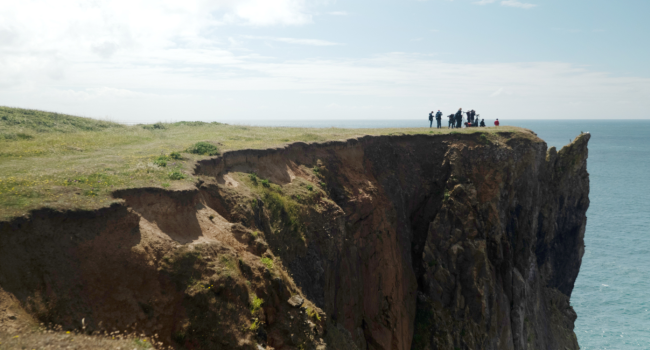Species- or habitat- based assessments of vulnerability to climate change? Informing climate change adaptation in special protection areas for birds in England

Author(s): Duffield, S.J., Morecroft, M.D., Pearce-Higgins, J.W. & Taylor, S.D.
Published: February 2024
Journal: Biological Conservation Volume: 291
Article No.: 110460
Digital Identifier No. (DOI): 10.1016/j.biocon.2024.110460
In this paper, two approaches commonly adopted by Natural England for climate change vulnerability assessments were used to assess the vulnerability to climate change of Special Protection Areas (SPAs) for birds in England; one focused on species, and the other on the habitats. Importantly, the study set out to test whether these two approaches would provide similar results, suggesting that climate vulnerability for habitats and species were linked, or whether they would differ, potentially indicating different aspects of climate vulnerability.
Climate vulnerability of birds is different between protected sites, with bird communities in upland habitats the most vulnerable, whilst communities in other habitats had a lower vulnerability. When separating vulnerability between breeding and wintering bird communities, freshwater wetland, heathland and woodland communities were regarded as having a particularly low vulnerability, with many species regarded as potentially expanding in range or abundance in response to climate change. Habitat vulnerability showed a different pattern, with coastal habitats identified as the most vulnerable, and upland habitats the least vulnerable.
This comparison shows that measuring climate vulnerability in different ways can help provide additional information to land managers about how best to adapt to climate change. For example, whilst many coastal bird species are not regarded as having high vulnerability to climate change, their habitats are vulnerable, particularly due to climate driven sea-level rise and greater risk of storm surges. The species models did not take account of changes in habitat extent, highlighting the value of this twin assessment. Conversely, many upland species are cold-associated and declining in response to climate change, but their habitats are regarded as having a low vulnerability because they are large, continuous and have heterogeneous topography with potential for microclimates to provide refugia.
By comparing species and habitat vulnerability, different responses to climate change can be prioritised. For example, habitat management to increase resilience should be prioritised on SPAs where bird species are projected to respond positively to climate change, but yet their habitats are likely to be adversely impacted. Conversely, targeted species interventions may be required on SPAs where the habitats have low vulnerability, but species are at risk; such interventions are increasingly recognised as having positive impacts on climate vulnerable species. Sites with high species and habitat vulnerability may require a twin approach, but ultimately are most likely to require off-site action at the network rather than individual site level.
This study shows the value of using large-scale and long-term data, such as those collected by BTO’s long-term monitoring schemes, to undertake climate vulnerability assessments, and how the results can be used by conservation organisations such as Natural England, to inform the management of protected sites.
Abstract
It is increasingly important to understand the impacts of climate change on biodiversity and ecosystems to support the development of effective adaptation strategies. The impact of climate change will vary for different species and habitats, with some at greater risk than others in any given location. Assessments of climate vulnerability are frequently the starting point for adaptation planning but there are a variety of different approaches and it is not clear which is best in different circumstances.
Protected areas are core to nature conservation and are the focus of this study. We compare two commonly used approaches, one focused on species, the other on the vegetation which forms the habitats these species utilise, to assess the vulnerability to climate change of Special Protection Areas (SPAs) for birds in England. Our aim was to test whether the two approaches identify the same locations as being of high vulnerability and to inform the prioritisation of adaptation actions.
The vulnerability of bird communities varied significantly between protected areas with differing predominant habitat types but there was no simple relationship between vulnerability of habitats and species. Bird communities in upland habitats were most vulnerable, with lower vulnerability found in other habitats and many species potentially able to benefit from climate change. In contrast the habitat vulnerability assessment showed that the upland habitats had relatively low vulnerability, but others, particularly coastal sites were more vulnerable.
It is therefore important to develop adaptation strategies based on an understanding of the vulnerability of both the species and their habitats, with different prioritisations in different contexts. SPAs were grouped according to the vulnerability of bird species which they were intended to protect and the broad habitat type. Six broad habitat types were identified; freshwater/wetland, coastal, grassland, heathland, woodland and upland. These groupings were used to help determine which sites are at greatest risk and the type of action that may be required, particularly whether intervention should focus on adaptation for the habitats, the species or both.







Share this page